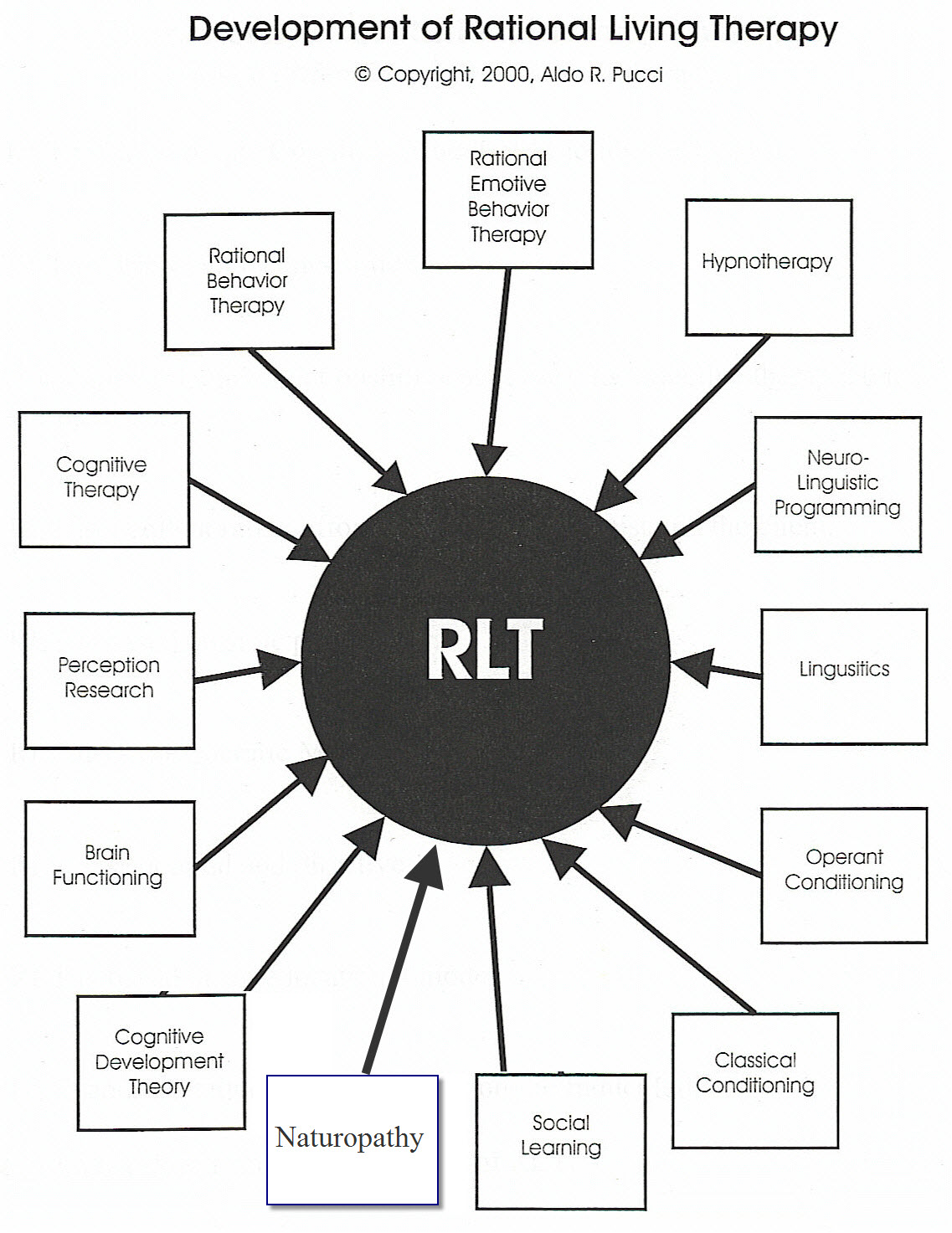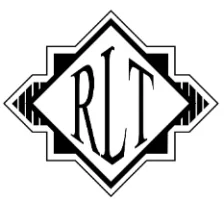Development of Rational Living Therapy
Without realizing it, Dr. Aldo R. Pucci began developing Rational Living Therapy from the very beginning of his psychology study, which began in 1982. As is typical for most clinical psychology graduate students, he was introduced to many different approaches to counseling/psychotherapy. But it was when Rational Emotive Therapy was covered that something clicked for him. Pucci was always fascinated with how wrong people could be in their thinking, and he was drawn to lists of common myths on various topics.
However, given his background in electronics, Pucci was attracted to very straightforward behavioral theory, particularly operant conditioning. He believed that behavior was the result of rewards and punishments. If rewarded, a person would be more likely to repeat the behavior, while if punished, he or she would be less likely to repeat it. Thinking seemed largely irrelevant to him, at least from a therapeutic standpoint. Therefore, in graduate school, he ordered a book called “Rational Behavior Therapy” by Dr. Maxie C. Maultsby, Jr, thinking that it was a behavior therapy book. As he began to read it, Pucci quickly realized that it was a cognitive-behavioral therapy book, and Maultsby did an outstanding job presenting the psychoneurophysiology of emotions and behaviors, thus proving that our thoughts cause our feelings and behaviors.
Dr. Maultsby was a physician who was trained by Dr. Albert Ellis in Rational Emotive Therapy (RET). Maultsby eventually realized that he had developed a new approach to CBT that warranted a new title. Dr. Pucci had the great fortune of being trained in Rational Behavior Therapy (RBT) by Dr. Maultsby, and Pucci practiced RBT for several years until he had the same experience with Maultsby as Maultsby had experienced with Ellis.
It was not fair to Maultsby to continue to call Pucci’s approach RBT. Dr. Pucci thought it important to call his own approach something if he wanted to share it with others. Pucci eventually named his approach Rational Living Therapy, as that title reflects the main intention of the therapy — helping clients to get better and, in the process, teaching them a rational approach to living that they could apply to anything on their own, rather than only focusing on the client’s presenting problems.
So the first influence in the development of RLT was Dr. Pucci’s training in Rational Behavior Therapy. Maultsby’s RBT is systematic and emphasizes self-help skills. The second influence in the development of RLT was Pucci’s training in Rational Emotive-Behavior Therapy. He received training not only from Dr. Albert Ellis, but Pucci was also influenced by Ellis’ trainees, such as Dr. Michael Edelstein, Dr. Nando Pelusi, and Dr. Michael Rosenbaum. Ellis’ emphasis on people’s demands or “musts” causing their disturbance resonated with Pucci. Additionally, Pucci learned a great deal about therapeutic resistance from Dr. Ellis’ work.
The third influence on the development of Rational Living Therapy was Dr. Pucci’s study of hypnotherapy as taught by Dr. Michael Preston of the Institute of Medical Hypnosis. Pucci became interested in psychology while in high school, as he had found that self-hypnosis helped him in his efforts to succeed in the sport of powerlifting. However, by the time he was in a position to study hypnotherapy, Pucci had already been taught by Maultsby and was convinced that cognitive-behavioral therapy was the most beneficial approach for those seeking therapy. Pucci decided to pursue training in hypnotherapy, but he wondered if it would conflict with CBT in theory and practice. The first statement that Dr. Preston made during Pucci’s initial training with him was, “Everything we do is preceded by a thought.” Pucci quickly learned that hypnotherapy is simply another way to help people change the way they think. However, with hypnotherapy, the client does not need to believe what is said to them, and that fact can significantly hasten the client’s progress. Pucci not only integrated an excellent systematic hypnotherapy approach into his therapeutic system, but he also integrated hypnotherapy theory into his theory of how people acquire thoughts.

The fourth influence on the development of Rational Living Therapy was Pucci’s study of Neuro-linguistic Programming (NLP). Pucci was motivated to learn NLP after he realized that CBT is a sales job. The therapist has a philosophy and techniques that he or she hopes the client will accept and use, but sometimes the client is unwilling to buy it. Therefore, Pucci studied sales techniques, and he learned that many salespeople learned NLP to deal with potential customers’ resistance. Pucci then studied NLP and integrated it into RLT as another way to deal with clients’ therapeutic resistance, as well as to help set the stage for therapeutic success, even if the client is not particularly resistant.
The fifth influence on the development of Rational Living Therapy was Dr. Pucci’s study of linguistics. Thoughts cause feelings and behaviors. Verbal thoughts consist of words, and each word in a sentence helps to provide meaning. In relation to our emotions and behaviors, it is never “just semantics”—it is all semantics.
The sixth influence on the development of Rational Living Therapy was Dr. Pucci’s study of learning theory, particularly operant conditioning, classical conditioning, and social learning.
The seventh influence on the development of Rational Living Therapy was Dr. Pucci’s study of cognitive development theory, especially the work of Jean Piaget. The cognitive age at which people are exposed to information plays a significant role in terms of their ability to examine that information for its accuracy and challenge its accuracy. Cognitive development theory played a significant role in determining how to help clients change their thinking at all age levels.
The eighth influence on the development of Rational Living Therapy was Dr. Pucci’s study of brain function knowledge and research. Pucci agrees with Maultsby, who repeatedly stated, “The therapist who does not know how the brain works is like the auto mechanic who does not know how the engine works.” Basing techniques and therapeutic philosophy on how the brain works increases the probability that therapy will be successful.
The ninth influence on the development of Rational Living Therapy was Dr. Pucci’s study of perception research, which includes social psychology research. Rational Living Therapy teaches that when we feel an emotion, we first become aware of something, we then think something about it, and we consequently feel the logical emotional feeling consistent with the thought. Our thoughts cause our feelings and behaviors, not the things we are aware of. However, sometimes our perception of the world around us is incorrect. As a result, we react to something that is not. RLT takes into consideration anything that causes us to perceive reality incorrectly.
The tenth influence on the development of Rational Living Therapy was Dr. Pucci’s study of Dr. Aaron Beck’s Cognitive Therapy. Beck’s identification of cognitive distortions and use of the “downward arrow” technique were integrated into RLT. Although RLT utilizes the downward arrow technique for a different purpose, Dr. Pucci credits Beck with developing the technique.
The eleventh influence on the development of Rational Living Therapy was Dr. Pucci’s study of naturopathy. Naturopathy seeks to help people identify and correct the cause(s) of their physical problems rather than simply extinguishing symptoms. Rational Living Therapy seeks to help people to get better rather than simply feel better. For example, no child is hyperactive because they are deficient in Ritalin. RLT seeks to identify why the child is hyperactive and to correct the cause(s). The two main ways RLT helps their clients to get better are to focus on underlying assumptions and to teach them rational self-counseling skills they can apply to any situation long after the formal therapy has ended.
